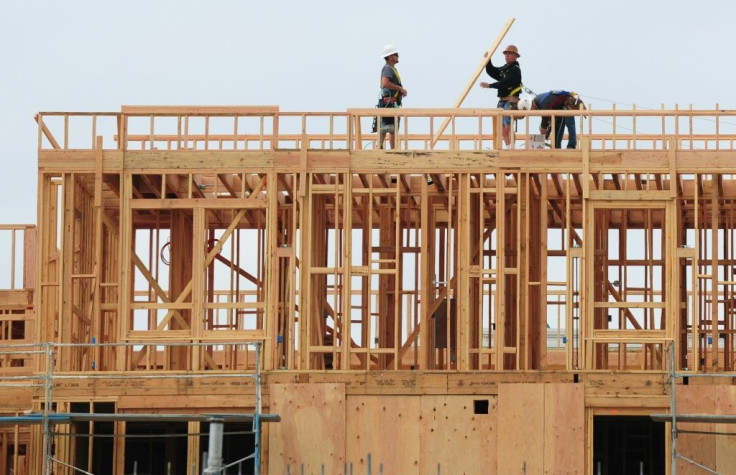US Economic Growth Surprisingly Solid Despite Trade War

The US economy slowed a touch in the third quarter but remained solid, thanks to a pickup in home sales and steady consumer spending, according to official data released Wednesday.
GDP growth avoided the steeper drop-off feared by economists but the US-China trade war still walloped the business sector, according to Commerce Department data.
As he seeks to deescalate a damaging trade war, the steady expansion offered President Donald Trump a measure of breathing room. His economic agenda so far has failed to produce the sustained annual three percent growth he vowed to achieve on taking office.
The economy expanded 1.9 percent in the July-September period, well above economists' expectations but a notch lower than the 2.0 percent growth seen in the second quarter.
The result, which is subject to revision, muddies the waters for the US Federal Reserve, which is expected to announce a third consecutive interest rate cut later Wednesday in the effort to buoy the economy amid the uncertainty caused by Trump's trade wars.
"The Greatest Economy in American History!" Trump tweeted an hour before the data was released.
But while the White House may breathe a sigh of relief, the details also offered a few reasons to worry.
Rattled by the uncertainty of Trump's trade wars and a global economic slowdown, business investment tumbled the most in nearly four years, according to the report.
And the decline in investments in structures -- stores, offices, factories and hotels -- accelerated, posting the second straight double-digit drop.
Consumer spending, a mainstay of the economy, remained solid but slowed ahead of the holiday season, with spending on durable goods like autos and computers cut nearly in half, the data showed.
The housing sector, meanwhile, was a bright spot.
Housing, exports boost growth
After dragging on the economy for a year and a half, spending on new and existing homes jumped higher as would-be home owners pounced on attractive mortgage rates in recent months in the wake of the Fed rate cuts.
Exports also recovered slightly, posting a modest increase and adding somewhat to growth after tumbling in the second quarter.
A slowing global economy has hit foreign demand for US goods and services, raising fears the world's troubles could wash up on US shores.
While the quarterly report was not as bad as economists feared, it did confirm a slowdown is underway.
Annual GDP growth slowed to 2.0 percent from 2.3 percent in the second quarter, the second straight slowdown and the slowest pace of Trump's presidency.
As the growth has slowed, the Fed has rolled back some of the increases in the benchmark lending rate that were implemented last year when the economy was strengthening, but if GDP holds up it makes the decision on the next step more complex.
A minority of voices among Fed policymakers say the slowdown this year is merely the economy cooling back to a more normal pace as the boost from tax cuts and fiscal stimulus fades, which reduces the need for more stimulus.
And a key measure of inflation in the GDP report -- personal expenditure prices excluding food and fuel -- surpassed the Fed's two percent target, rising to 2.2 percent, the highest level since the start of 2018.
Accelerating inflation will reinforce the arguments of Fed hawks who oppose further rate cuts but it is unlikely to silence Trump's loud demands for stimulus from the central bank.
Some analysts continue to think the economy is poised to weaken further, but others caution that special factors may be exaggerating the worrisome signs.
"In short, growth has slowed, but it is still not especially weak," said economist Jim O'Sullivan of High Frequency Economics.
"The drop in business investment in equipment is attention-grabbing but weakness is being exaggerated by Boeing's problems."
The US aviation giant has slowed production of its formerly top-selling 737 MAX jets, which have been grounded worldwide following deadly crashes.
Wall Street was flat after the GDP data release but later forged higher, with the S&P 500 swinging to a record close as investors were comforted by the Fed's decision to cut interest rates as expected.
© Copyright AFP 2024. All rights reserved.





















